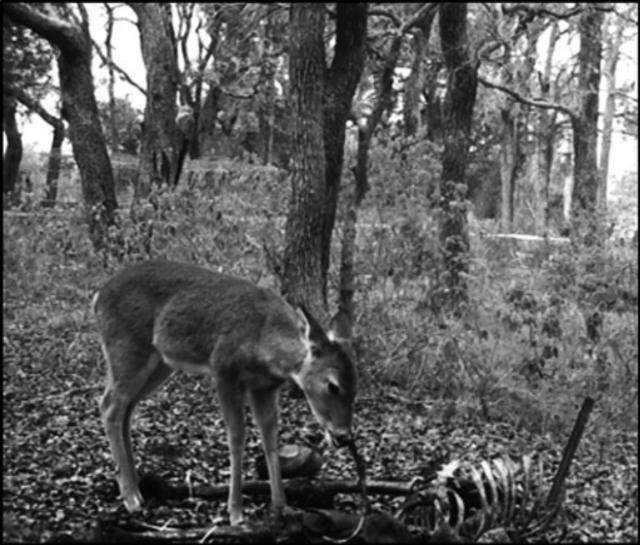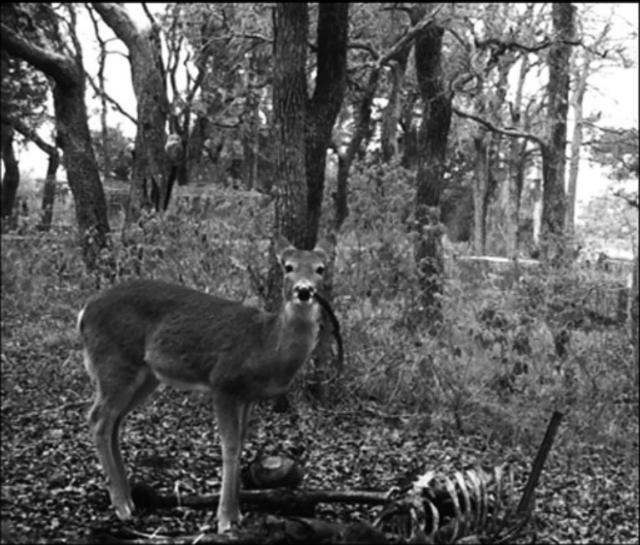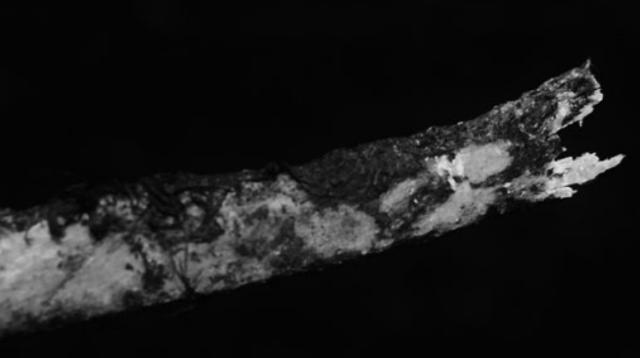Deer caught chewing on human corpse for first time ever
For the first time ever, forensic scientists have observed deer chewing on a human carcass.
Advances in forensic science can be thanked for the identification of dead bodies and thus the solving of crimes. But these advances would have never been possible without the examination of the effects of the natural elements on human corpses. In the US, there are entire research centers dedicated to such gruesome pursuits. For example, San Marcos, Texas’ Forensic Anthropology Research Facility (FARF) lets donors’ dead bodies decompose in the outdoors for scrutiny by scientists.
A Texas State University research team led by Daniel J. Wescott wanted to examine the distinct kinds of marks different scavengers left on a human corpse. Therefore, in July 2014, the scientists left human remains in the 26-acre FARF facility’s wooded area. Near the body, they set up a motion-sensitive camera that would make a record of any animal activity. They were expecting the usual suspects – such as coyotes, raccoons, foxes, turkey vultures, and other carrion-eaters – to show up for the feast. It wasn’t long, however, before a deer came into the picture to do the unthinkable.
On January 5 of the following year, some 190 days after the body was deposited in the forest and the corpse was nothing but a skeleton, the camera captured something bizarre. One young white-tailed deer was glimpsed near the remains, gnawing on one of the rib bones. A few days later on January 13, 2015, a deer was once again caught chomping down on another rib bone, which dangled from its mouth as if it were a cigar. It is unknown if the deer in the separate instances were the same deer or two different individuals.
Whatever the case, this is the first time scientists have witnessed human bones being scavenged by Bambi.
“Herein, we report on the first known photographic evidence of deer gnawing human remains,” said the researchers.


Not always herbivores
While deer munching on human carcasses is new to us, these animals have in fact been previously observed eating the flesh of other animals. For example, they’ve been known to snatch baby birds out of their nests, then make a meal of them. They’ve also been caught eating bats, fish, and dead rabbits.
It’s possible that deer may sometimes consume meat as a way to gain the nutrients their usual herbivorous diet may be lacking. For instance, minerals like calcium and salt are especially scarce during certain seasons, so deer may adapt to become scavengers or even carnivores.
“[The] desire to consume bone, is practiced by ungulates [a hoofed mammal] primarily to obtain phosphorus in addition to supplementing calcium, sodium, and other minerals that are absent from their vegetarian diet during periods of nutritional stress, particularly in the winter months or without seasonal preference,” explained the research team.
According to the study authors, deer and other ungulates have a preference for the dry bones (particularly those with a rectangular cross-section) of animals that have been long dead. When an ungulate munches on a bone, its jaw’s zigzagging motions cause extensive damage to the bone’s tip. Said damage appears in the form of a “stripped, forked pattern.”

“This [forking] feature has been described by researchers as an artifact caused by the deer and other ungulates holding the bone in its mouth like a cigar,” explained the team. “This is the first reported incident in the forensic literature of a deer scavenging human remains indicating that it is important to consider deer scavenging when analyzing... modifications to weathered bones in... death investigations.”
This forking pattern is in contrast to the marks left by carnivores, whose bites leave behind pits and punctures in bones. Carnivores also prefer the remains of the recently deceased.
While deer chowing down on human carcasses is uncommon, the ability to recognize the marks an ungulate makes on a bone it’s been chewing on may help determine the age of decomposing body, and the location it came from. This in turn could help investigators understand extremely mysterious crime scenes.
The study was published in the Journal of Forensic Sciences. — GMA News




